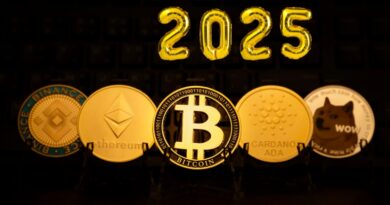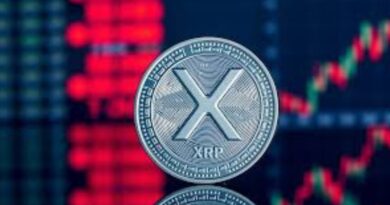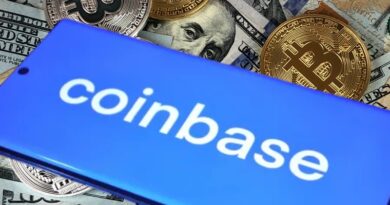ETH, SOL, and XRP Overvalued Compared to Bitcoin Supply
What’s Everyone Talking About?
Lately, there’s been a growing debate in the crypto world about the value of altcoins like Ethereum (ETH), Solana (SOL), and Ripple (XRP) compared to Bitcoin (BTC). One voice stirring the pot is Samson Mow, a well-known Bitcoin advocate. He says these altcoins might be way overvalued when measured next to Bitcoin’s limited supply.
But is there truth in that? Let’s break it down in simple terms so you can decide for yourself.
Why Bitcoin’s Supply Matters
Bitcoin is famously scarce. There will only ever be 21 million Bitcoins. This sets it apart from most other coins, which don’t have a strict cap.
Imagine Bitcoin as land in a tightly regulated city—there’s only so much of it, so over time, it gets more valuable. ETH, SOL, and XRP, on the other hand, are more like houses being built without zoning limits. There’s always more going up, so their long-term scarcity—and possibly their long-term value—is more questionable.
Samson Mow’s Key Argument
Mow believes we’re mispricing ETH, SOL, and XRP by ignoring Bitcoin’s limited supply. He compares it to dividing Bitcoin’s total supply by the valuations of these other coins. Here’s what he found:
- ETH’s market cap suggests it should be worth around 5.5 BTC per coin.
- SOL would need to be worth about 1.16 BTC per coin.
- XRP should equal 0.68 BTC per coin.
Sounds wild, right? But what’s really going on here?
Market Cap vs. Value: Are We Comparing Apples to Oranges?
Let’s step back. Market cap is a rough way to tell how big or valuable a cryptocurrency project seems. It’s just the current price times the number of coins in circulation.
But here’s the kicker: not all crypto projects are created equal. ETH isn’t trying to be Bitcoin. It’s more like a giant computer or app store. SOL is going after high-speed, low-cost transactions. XRP aims to make bank transfers faster.
At the end of the day, utility shapes value—not just supply.
The Use Case Factor
Think about it like this. If Bitcoin is gold, ETH is more like fuel for a network. The more apps, NFTs, or smart contracts running on ETH, the more demand for it.
That’s part of why ETH stays relevant—it powers a whole ecosystem. In fact, it plays a major role in DeFi, which we talked about in our post on Ethereum vs. Bitcoin: Which One Should You Invest In?.
SOL brings speed to the table. It’s built for fast payments and micro transactions, making it a favorite for developers looking to avoid Ethereum’s higher fees.
So, while Bitcoin remains king in terms of scarcity and security, these altcoins may hold their own when it comes to innovation and utility.
What About XRP?
XRP is quite different. It’s backed by Ripple Labs and targeted for use in international banking systems. This makes it useful—but some investors have doubts due to its centralized structure and ongoing legal battles. We touched on similar risks in our article on Risk Management in Crypto Trading.
Should We Be Worried These Coins Are Overvalued?
That depends on your investment goals.
If you believe that digital scarcity equals long-term value, Bitcoin might be your best bet. But if you’re more focused on owning pieces of networks that enable smart contracts, DeFi, NFTs, and fast transfers, then coins like ETH and SOL deserve your attention.
Still wondering if these assets are overpriced? Ask yourself a few simple questions:
- Are these coins solving real-world problems?
- Is their user base growing over time?
- Are developers building new apps on their networks?
In other words, don’t just look at supply. Look at what each coin does—and whether people actually use it.
Real-World Example: Comparing With Tech Stocks
Think about Google vs. Shopify. Google is bigger and more established, much like Bitcoin. Shopify is newer, more volatile, and has high potential—kind of like Ethereum or Solana. Investors are willing to pay more for Shopify (relative to earnings) because of its growth. But that doesn’t mean it’s better than Google.
Same goes for crypto. Price or market cap alone doesn’t tell the full story.
Market Cycles: The Missing Angle
Another reason ETH, SOL, and XRP might look expensive now is the current stage of the market. Crypto often moves in cycles. After a Bitcoin rally, money usually flows into altcoins next—a pattern we’ve discussed in our guide on Identifying Crypto Trends Early.
So when altcoins are booming, they may temporarily outshine Bitcoin on the charts. But soon after, the cycle resets, and Bitcoin reasserts its dominance.
Smart investors learn to ride the cycles instead of fighting them.
How Can You Make Smarter Crypto Decisions?
Knowing all this, how should you react?
Here are a few simple steps to guide your crypto strategy:
- Know your time horizon. Are you trading short-term or investing for years?
- Diversify your portfolio. Don’t bet everything on a single coin.
- Watch use case and adoption. A coin with real utility may outperform a hype-driven asset over time.
- Keep learning. Follow news, explore whitepapers, and read blogs like our piece on Building a Long-Term Crypto Investment Strategy.
Above all, don’t get caught up in one person’s opinion—no matter how confident they sound.
The Takeaway
Yes, Bitcoin’s limited supply makes it a unique and powerful store of value. But that doesn’t automatically mean ETH, SOL, and XRP are overvalued.
Each asset has strengths and weaknesses—and you need to weigh them for yourself.
If your strategy is based on scarcity and sound money, BTC may be your #1 pick.
If you’re interested in building apps, trading NFTs, or participating in DeFi, ETH and SOL bring a lot to the table.
And if fast, low-cost payments matter to you, XRP may deserve a closer look—despite its controversies.
Curious how these coins stack up in terms of strategy? Check out our post on Crypto Portfolio Allocation for Beginners to get started.
Your decisions should reflect your goals, your risk tolerance, and your vision of the future. Not someone else’s tweet.
What do you think? Are altcoins really that overvalued—or are we just comparing different tools for different jobs?
Let us know in the comments.









